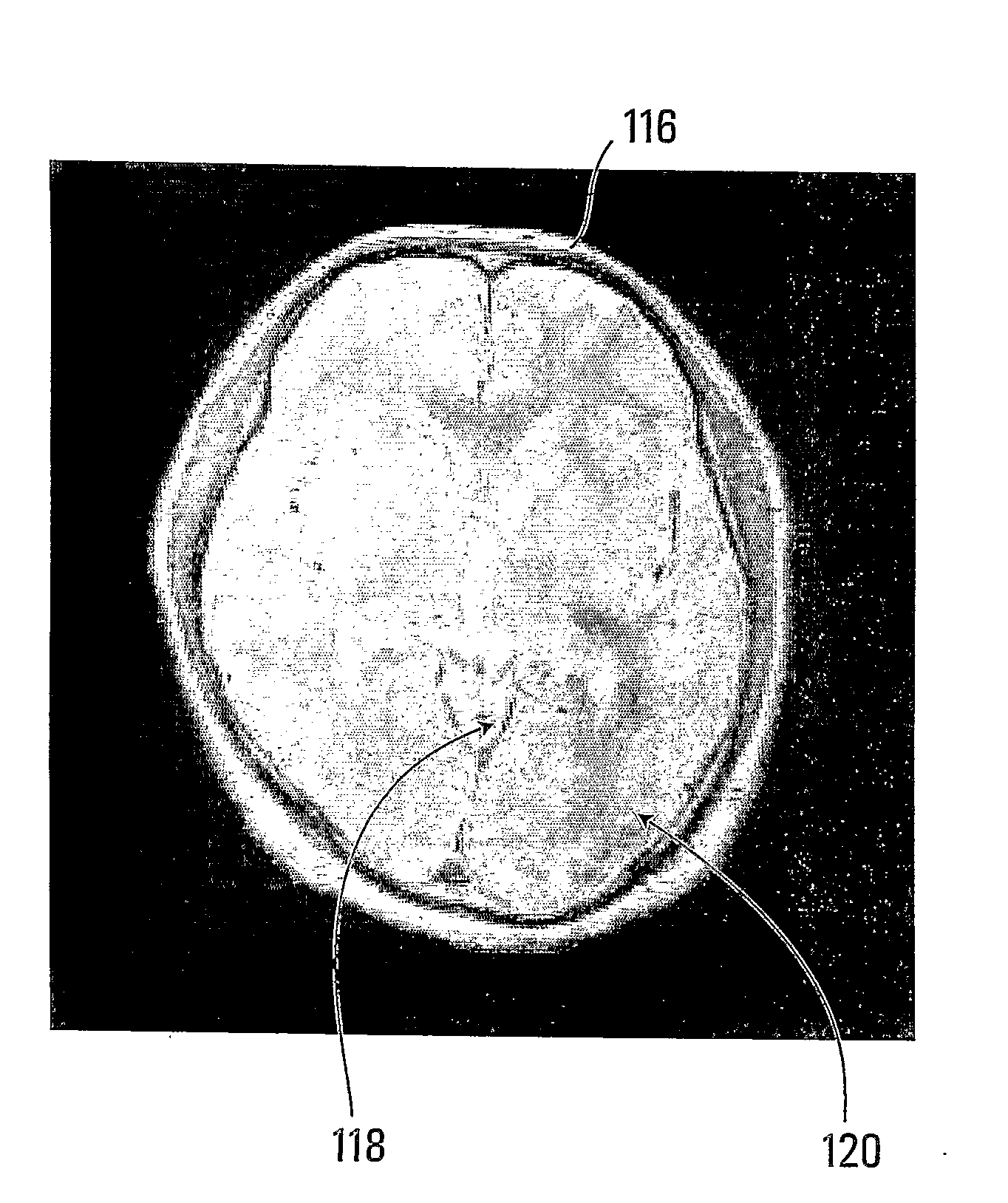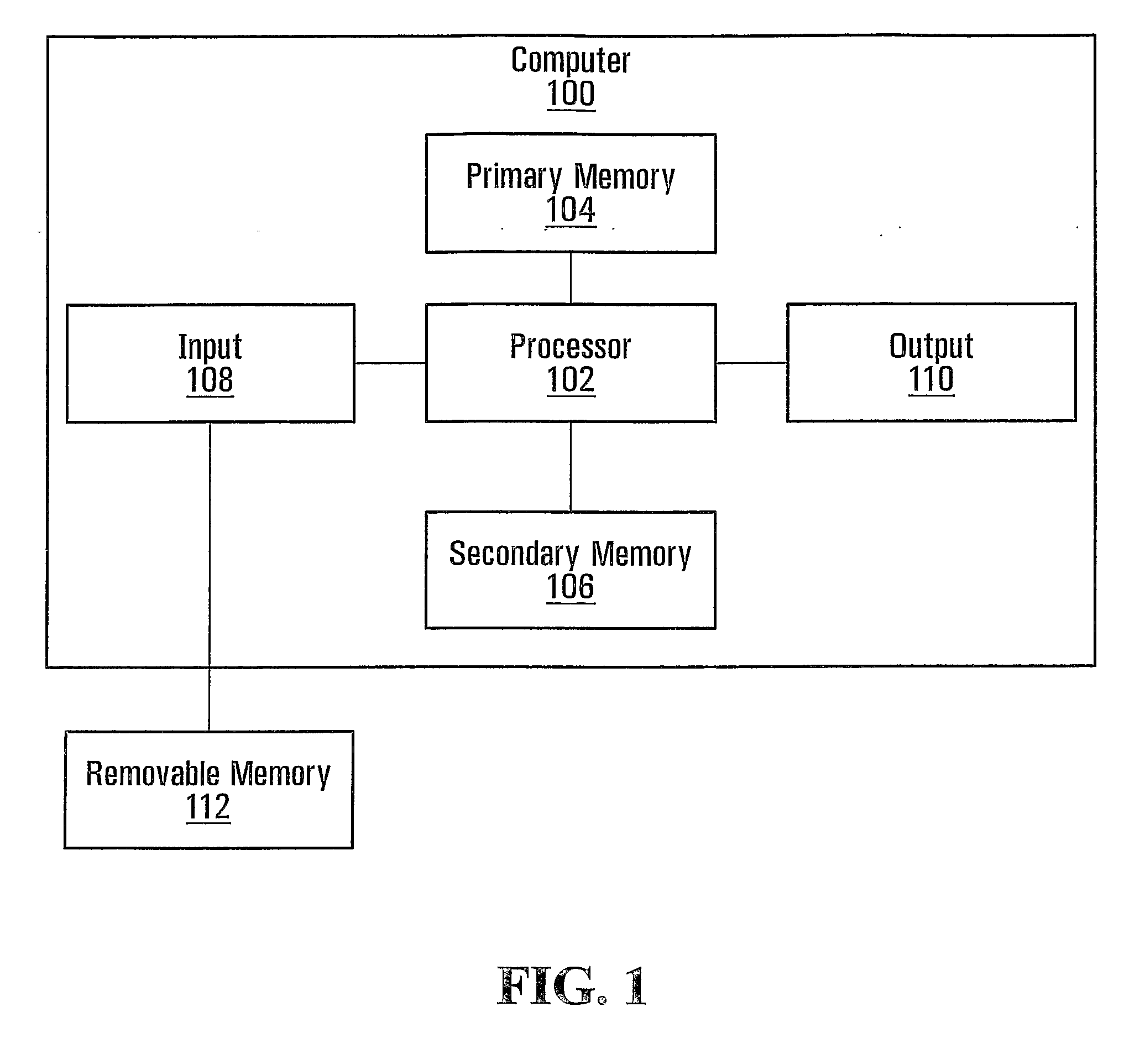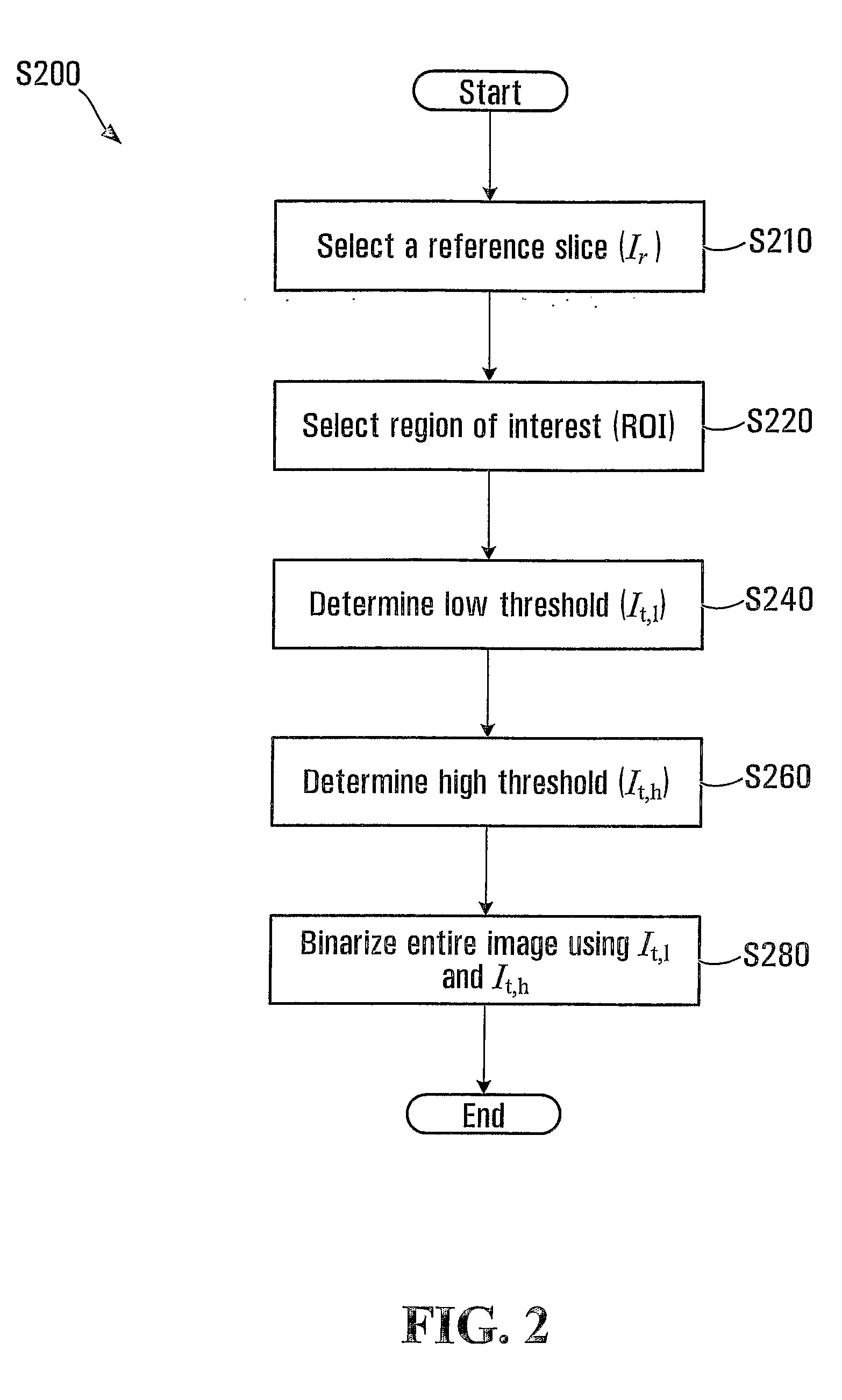Method and apparatus for image segmentation
a segmentation method and image technology, applied in the field of image processing, can solve the problems of limited application for segmentation single-contrast, voxels/pixels for different tissue classes are often not well isolated in space, and the technique applicable to analyzing multi-contrast images is often less applicable to analyzing single-contrast images
- Summary
- Abstract
- Description
- Claims
- Application Information
AI Technical Summary
Benefits of technology
Problems solved by technology
Method used
Image
Examples
Embodiment Construction
[0040]Exemplary embodiments of the present invention include methods of image segmentation and thresholding. These methods may be performed, at least in part, by a computer device such as computer 100 shown in FIG. 1, exemplary of embodiments of the present invention.
[0041]Computer 100 has a processor 102, which communicates with primary memory 104, secondary memory 106, input 108 and output 110. Computer 100 may optionally communicate with a network (not shown).
[0042]Processor 102 includes one or more processors for processing computer executable codes and data.
[0043]Each of memories 104 and 106 is an electronic storage comprising a computer readable medium for storing electronic data including computer executable codes. Primary memory 104 is readily accessible by processor 102 at runtime and typically includes a random access memory (RAM). Primary memory 104 only needs to store data at runtime. Secondary memory 106 may include persistent storage memory for storing data permanently...
PUM
 Login to View More
Login to View More Abstract
Description
Claims
Application Information
 Login to View More
Login to View More - R&D
- Intellectual Property
- Life Sciences
- Materials
- Tech Scout
- Unparalleled Data Quality
- Higher Quality Content
- 60% Fewer Hallucinations
Browse by: Latest US Patents, China's latest patents, Technical Efficacy Thesaurus, Application Domain, Technology Topic, Popular Technical Reports.
© 2025 PatSnap. All rights reserved.Legal|Privacy policy|Modern Slavery Act Transparency Statement|Sitemap|About US| Contact US: help@patsnap.com



